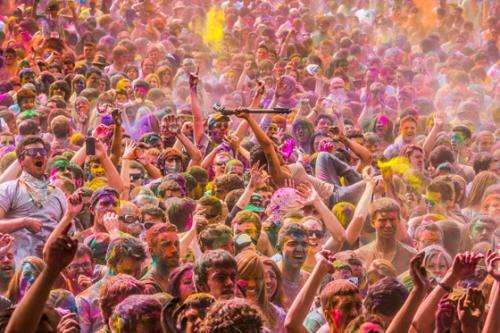Neuropsychology of social groups

For our brain, animate and inanimate objects belong to different categories and any information about them is stored and processed by different networks. A study by Raffaella Rumiati from SISSA, Andrea Carnaghi from the University of Trieste, and others shows that there is also another category that is functionally distinct from the others, namely, the category of "social" groups. The study has just been published in the scientific journal Cognitive Neuroscience.
It was research in the field of neuropsychology that revealed a functional distinction between some "macro-categories". "In neuropsychology, we look for 'double dissociation," explains Rumiati. "For example, we might observe some patients who have a cognitive impairment in recognising animate objects but have preserved the ability to recognise inanimate objects. However, to be able to say that the two functions are separate, we also need to find patients who exhibit the reverse problem, that is, who have trouble recognising inanimate objects but still have good cognitive capabilities as regards animate objects."
Rumiati and co-workers applied this method to the recognition of social groups. "The concept of 'social' category is crucially important for humans in evolutionary terms, and for this reason it's reasonable to think that specific, ad hoc circuits exist in the brain that ensure efficiency and speed in recognition." Rumiati and Carnaghi selected a number of patients with dementia and subjected them to tests assessing the selectivity of their impairments. "We were looking for patients with trouble recognising inanimate objects only, or animate objects only, or social groups only, so as to demonstrate the double dissociation of these functions." As a first step, Rumiati and Carnaghi checked the reliability of the literature findings on the double dissociation between animate and inanimate categories. "Classic studies tended to use pictures as cues, whereas we used words. The fact that we replicated previous findings demonstrates the soundness of the theoretical framework."
The main result, however, was to find a double dissociation between social groups and both animate and inanimate objects. "This means that social groups form a 'special' category in our brain," explains Rumiati. "We are equipped with cognitive mechanisms devoted to this type of cue because the ability to recognise, for example, the "mafia man", the "criminal" or the 'policeman' can save our lives.
"This study", explains Carnaghi, "has an important implication. It shows that it makes sense to apply the quantitative methods used in neuroscience even to the social sciences, and in particular to studies investigating how stereotypes and prejudices are formed. Thanks to this study we now know that a stereotype relating to people is processed by the brain in a different manner from a stereotype concerning an inanimate object or an animal."
More information: Rumiati RI, Carnaghi A, Improta E, Diez AL, Silveri MC. Social groups have a representation of their own: Clues from neuropsychology. Cogn Neurosci. 2014 Jan DOI: 10.1080/17588928.2013.876981 . www.ncbi.nlm.nih.gov/pubmed/24423240




















